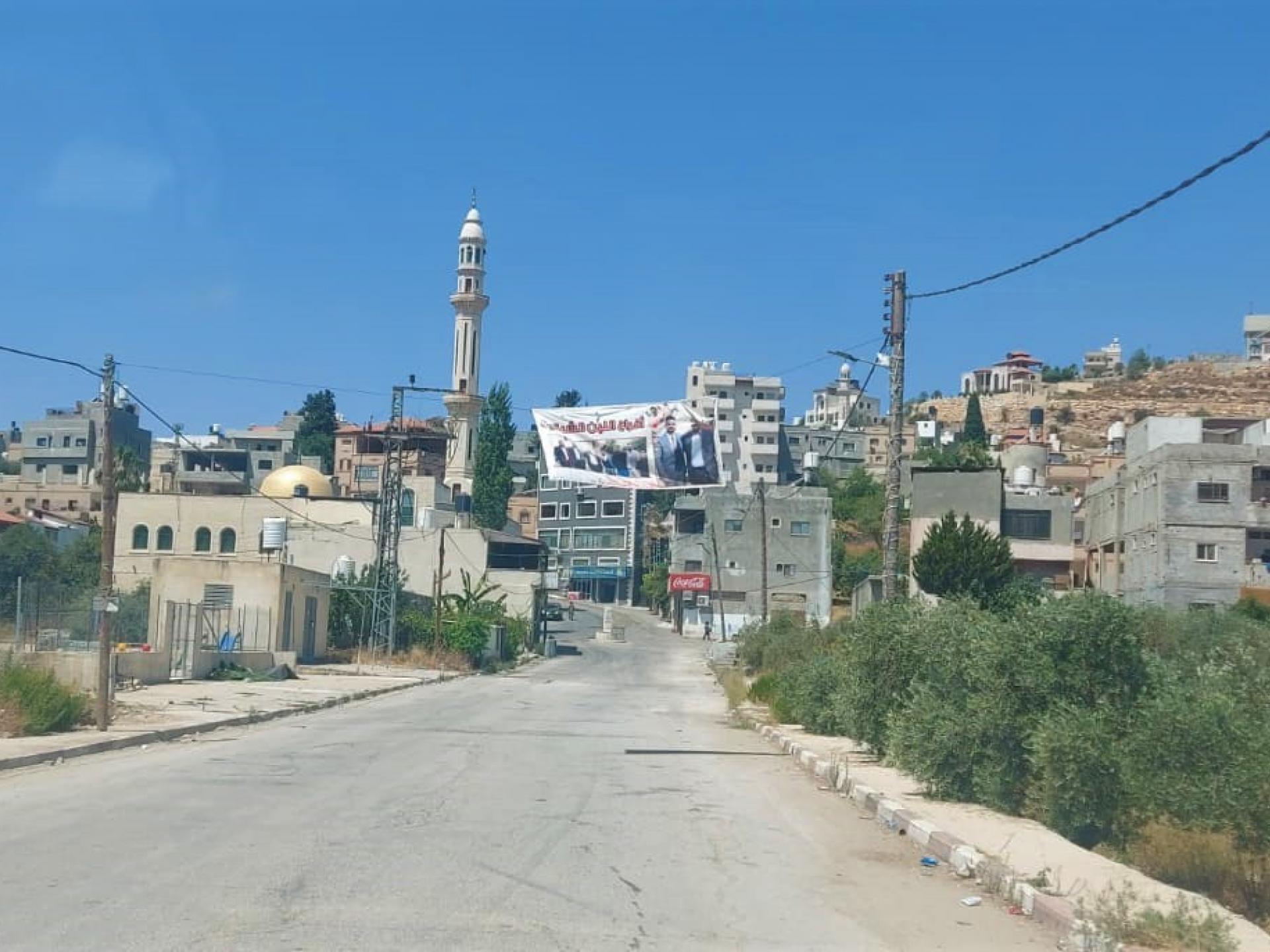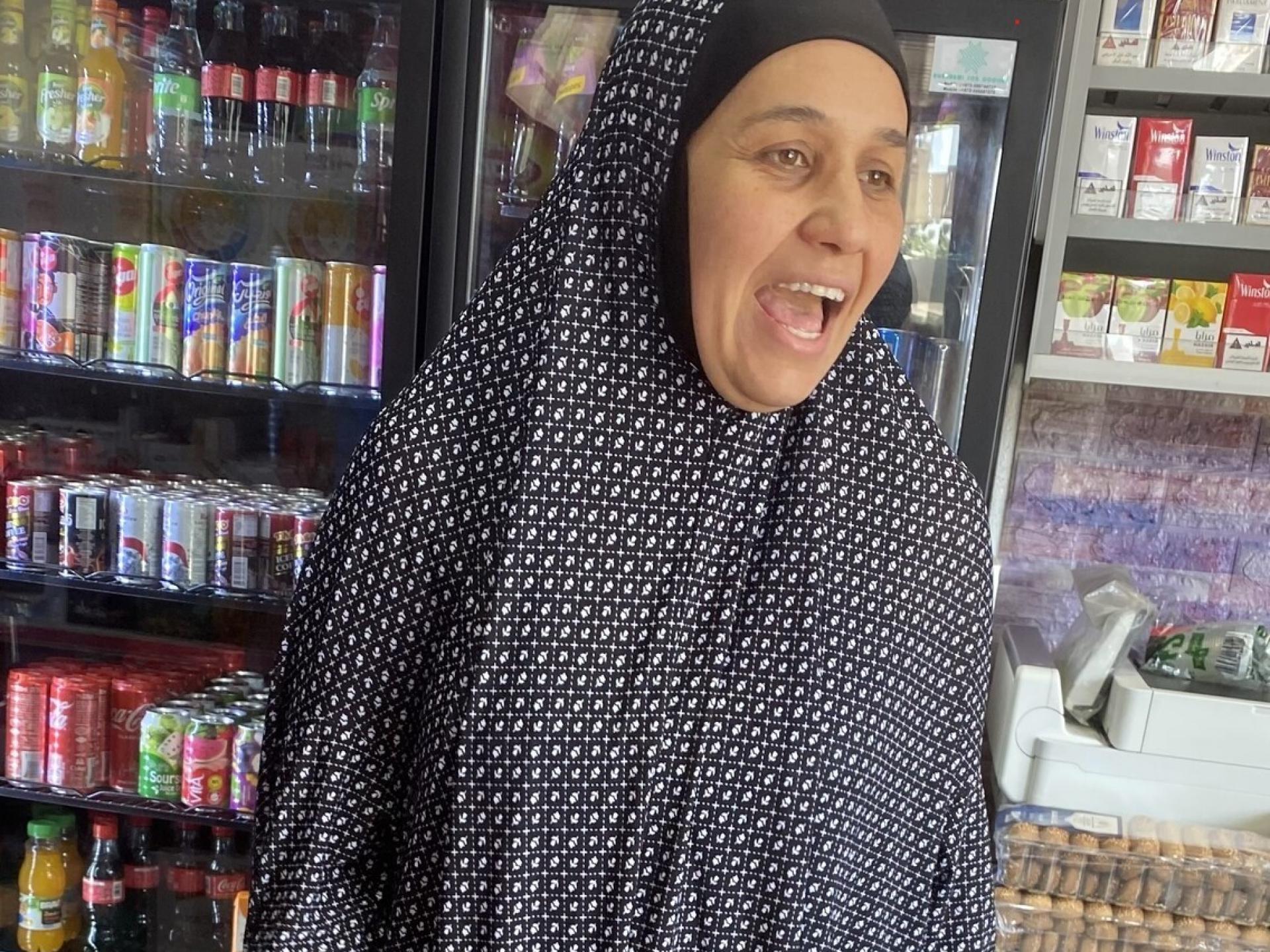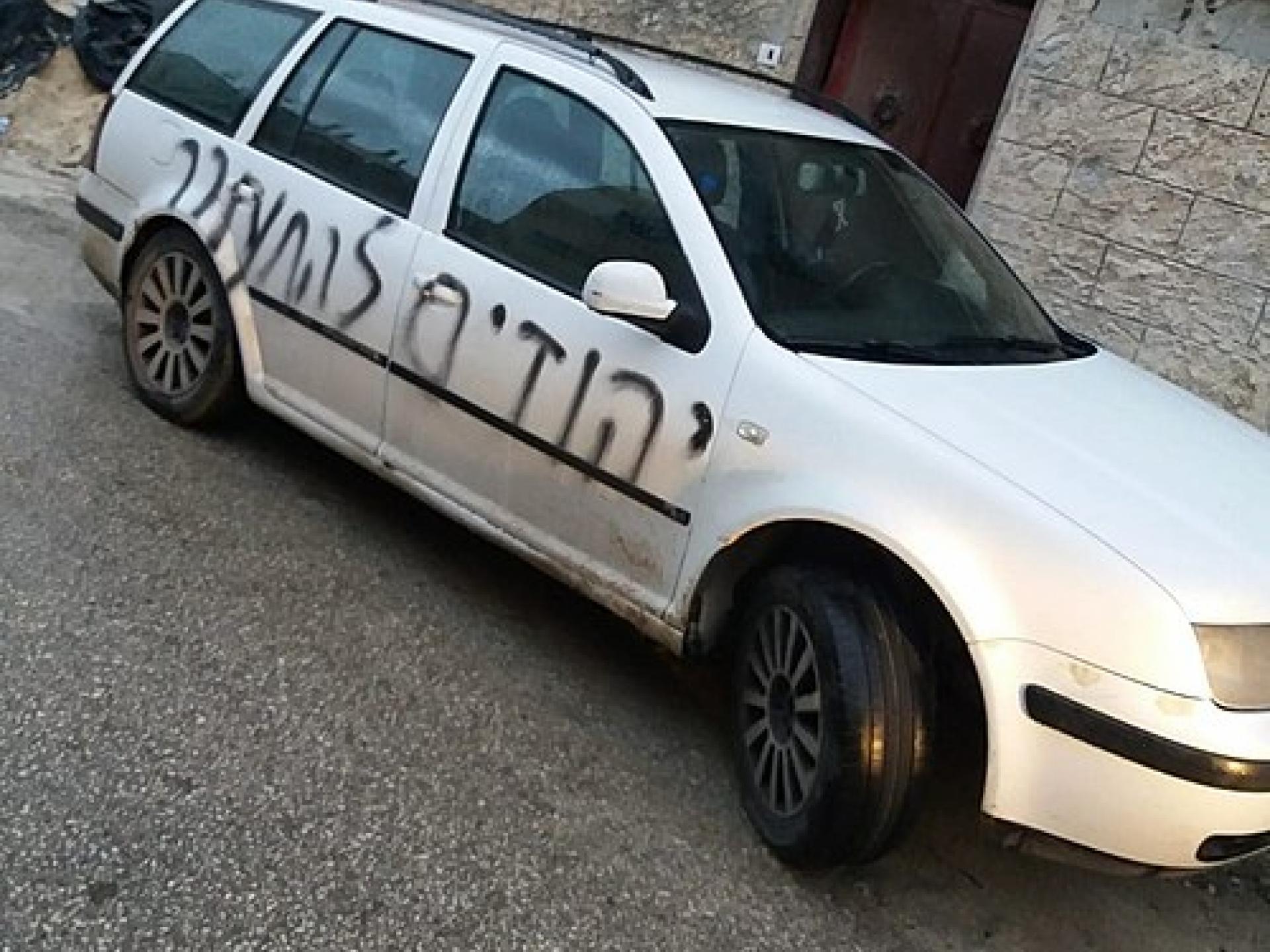Visiting the villages of Luban a-Sharqiya, Qabalan and Yasuf
“If we could live together without politics, just people, we would have no problems…”
These are the words of the greengrocer, next to Omar’s nursery. The date is one day after the passing of the law annulling the right of reason. We are all in a very dim mood. Still we decided to come on our vigil, bring things to Z’s shop and perhaps encourage people around us.
Mustafa gets us at the Rosh Ha-Ayin train station.
We decide to begin our journey with a visit to Omar, hear from him about the goings-on on the ground. His nursery is blooming, but there are no workers. He claims that the young do not want to work. Mustafa thinks so, too. Omar says that there no longer Military Policemen manning the checkpoint there, but rather soldiers of various units and they often come late and behave badly. In addition, there are not many customers – people are too warm to come and are not in the mood to shop.
We meet Z. near the gas station at the exit from Nabi Elias. He still trembles, but I find him looking in better health. Shoshi has brought him lots of electrical appliances and we hope that he’ll sell everything and have some money.
On our way to Luban A-Sharqiya, at Mustafa’s request, we stop at Huwara to eat at a restaurant where he is known and accepted, and we feel welcome. What we didn’t know was that the workers are so down today because they live in Nablus and tonight the Israeli army killed three wanted men there.
Hamas declared that the three were on their way to carry out an action when they ran into soldiers. According to army sources, the three arrived at the Samaritan neighborhood in a car, one of them disembarked and opened fire, and then the soldiers returned fire and killed all three.
We continue to Luban A-Sharqiya.
This is a village in the Nablus district. When the Likud party rose to power in 1977, their lands were taken for military needs and that is where the Ma’ale Levona colony was built, and Eli colony afterwards. For the erection of Eli, hundreds of dunams were confiscated, that are owned by the villagers, and the village is situated inside Area B…
On the right side of the road the new road is being built, and work is progressing swiftly night and day.
Our meeting point is at Amna’s grocery. She is full of smiles and joie de vivre and we cannot grasp where she takes her strength… She says that the army often closes the main entrance to her village with a yellow metal arm, and they have to drive around through the neighbor village A-Sawiya, a much longer route than the kilometer-and-a-half that separate them from the main road. The most irritating thing about this is that before school started, the army decided that only girls may use the shorter way, and boys over 11 must take the detour. They cannot use the shorter and better road. Why? Just so. Instead of walking about 10 minutes they will have to walk 45 minutes through A-Sawiya. On rainy days they prefer to stay at home. Naturally this angers them and when the army enters the village they throw stones at the military vehicles.
We decided to go back there when school being again, in the morning, and see this with our own eyes.
Our next stop is at Qabalan. This is a town in the eastern part of the northern West Bank, also belonging to the Nablus district. Following the Oslo Accords, 67% of the town’s area was defined as Area B, and the remaining 33% as Area C.
The town council is situated in a new building, designed with clean, modern lines. According to the local head of council, the designers are local engineers.
Qabalan numbers 10,000 inhabitants.
The head of the council is a very pleasant man, a good English speaker, and does not point to any problems, until we ask…
In answer to our question, he says there are seven schools locally – elementary and high schools. As in most places in the West Bank, after the students graduate, most of them begin to study in universities – in Nablus, Qalqiliya, the Open University and even Bir Zeit. But when they finish their university studies, they find no work and are forced to ask for a permit to work inside Israel, and naturally not in their own profession. The illegal colonist outpost Evyatar overlooks the village, manned only intermittently and harmless so far, but the lands on which it is built belong to Qabalan. There are also water problems – they receive too little from Mekorot (the Israeli state water company).
In 1973 they received 18 cub.m. an hour.
In 1993 they received 23 cub.m. an hour.
Since March of this year, they have been getting 50 cub.m. an hour.
The water comes to reservoirs built at a high altitude, and from there it is allotted the inhabitants.
Relatively this village does not look bad. It is built on a hilltop, far from colonies (until Evyatar will be permanently manned…) and the army has not been too often a visitor. So far…
Our last stop for today – Yasuf.
This village is situated in the Salfit district. In 1987 an area of about 500 dunams was declared state land. In 1999 colonists invaded and began setting up the outpost of Tapuach. In 2015 Yesh Din organization petitioned the Supreme Court, claiming that the outpost sits on privately-owned Palestinian land. The court instructed the demolition of 17 structures. Since then the colonists have been confronting Yasuf. They have incinerated a mosque and sprayed slur graffiti saying “Get ready for revenge action”. The village permanently suffers from invasions, harassment, stone-throwing, incinerations and vandalizing vehicles and tree groves.
The local council is in the heart of the village, a large building surrounded by hills of garbage, to the point that we can hardly step on ground when we disembark. The head of the council is busy meeting some honored men, but his deputy, Abu Yusuf, meets us readily, accompanied by a young man. Abu Yusuf speaks good Hebrew, naturally works in Israel as a floor-layer and plumber. He will soon begin to work in the Beilinson Hospital. He has been holding a work permit for years now, as well as his family members.
Yasuf is close to Kfar Tapuach, known for its vandal actions, as well as to the colony of Nofei Nehemyah and the Avinoam Yeshivah. They have all been built on land belonging to Yasuf villagers.
They receive a limited supply of water from Mekorot – 20 cub.m. an hour.
1400 dunams are located inside Area B. 4600 dunams are inside Area C.
5 families who built their homes 20 years ago inside Area B have been instructed to cease construction work.
Most young university graduates are forced to work inside Israel in construction.
Tapuach colonists harass them daily, placing checkpoints on the roads. He notes especially colonist girls who speak vulgarly and curse Palestinians. During clashes, the Israeli army helps the colonists by spraying Palestinians with teargas. They sense the worsening situation of late.
Yasuf has a beautiful spring, mentioned in Palestine researcher Victor Gran’s report of 1870, and luckily it is situated inside Area B. We asked to visit there but were told that the place is being renovated now and this is not the time. The report also mentions an ancient cemetery hewn in rock. It is an interesting place to visit. We were promised such a visit the next time we come.
Iskaka village also has springs, says Mustafa, but that too will have to wait for our next visit.
As we leave, a young man appeals for our help. He owns land in Area C. and is asking for a permit to reach them. We give him Sylvia’s number, although we assume that he would not receive such a permit, as that is the whole point of Area C.
That’s it. We have hade it with the sorrow and frustration at what Israel has been up to, and know that after this last anti-reasonableness law has been passed, the situation will only worsen. The Palestinians know this, too.



